Optimization Design of Hydraulic Fracturing Fracture Parameters of Horizontal Wells in Algal Limestone Reservoir
Abstract
:1. Introduction
2. Methods
2.1. Characteristics of Algal Limestone Reservoir
2.2. Mathematical Model Establishment
2.3. Model Validation
3. Results and Discussion
3.1. Fracture Length
3.2. Fracture Conductivity
3.3. Fracture Height
3.4. Fracture Spacing
3.5. Fracturing Mode
4. Conclusions
Author Contributions
Funding
Data Availability Statement
Conflicts of Interest
References
- Zhou, L.; Yang, D.; Zhang, L.; Yin, T. Characteristics of algal limestone reservoirs in Huatugou oil field and their relationship with oil and gas. Spec. Oil Gas Reserv. 2010, 17, 60–62. [Google Scholar]
- Qu, Z.; Zhao, Y.; Wen, Q.; Yu, J.; Liu, G. Optimization design of overall fracturing fracture parameters for horizontal wells. Pet. Geol. Recovery Effic. 2012, 19, 5. [Google Scholar]
- Xu, C.; Chen, C.; Wang, B.; Wu, Y.; Peng, C. Optimization of fracture parameters for horizontal well network fracturing in low-permeability and tight oil reservoirs. Block Oil Gas Fields 2014, 21, 5. [Google Scholar]
- Mao, Y. Optimization of overall fracturing fracture parameters for horizontal wells in ultra-low permeability reservoirs. J. Yangtze Univ. (Nat. Sci. Ed.) 2019, 16, 6. [Google Scholar]
- He, Q.; Zhu, L.; Li, Y.; Li, D.; Zhang, B. Simulating Hydraulic Fracture Re-orientation in Heterogeneous Rocks with an Improved Discrete Element Method. Rock Mech. Rock Eng. 2021, 54, 2859–2879. [Google Scholar] [CrossRef]
- Lu, H.; Li, Y.; Zhang, J.; Huang, A.; Li, X.; Wang, Y.; Qu, Z. Layer Selection Combination and Fracture Parameter Optimization Design of Staged Fracturing in Glutenite Reservoir. J. Chengde Pet. Coll. 2021, 23, 7. [Google Scholar]
- Jiang, B.; Zhou, Y.; Chen, L.; Yuan, H.; Tang, Z.; Ma, L.; Lu, C. Optimization of fracture parameters for heterogeneous reservoir in B425 block. Sci. Technol. Eng. 2021, 21, 9322–9329. [Google Scholar]
- Liang, X.; Meng, T.; Feng, G.; Zhao, G.; Wang, Z.; Liu, P. Evolution of permeability and pore structure of salt rock and its self-healing mechanism under coupled thermo-hydro-mechanical environment. J. Energy Storage 2023, 66, 107476. [Google Scholar] [CrossRef]
- Zhang, Z.; Meng, T.; Feng, G.; Zhang, D.; He, Y.; Liang, X. Study on the Periodic Collapse of Suspended Sandstone Interlayer under Coupled Thermo–Hydro–Mechanical Environment. Int. J. Geomech. 2023, 23, 04023113. [Google Scholar] [CrossRef]
- Meng, T.; Zhang, Z.; Taherdangkoo, R.; Zhao, G.; Butscher, C. Temperature-dependent evolution of permeability and pore structure of marble under a high-temperature thermo-hydro-mechanical coupling environment. Acta Geotech. 2024, 1–22. [Google Scholar] [CrossRef]
- Zhang, S.; Li, S.; Zou, Y.; Li, J.; Ma, X.; Zhang, X.H.; Wang, Z.; Wu, S. Experimental study on fracture height propagation during multi-stage fracturing of horizontal wells in shale oil reservoirs. J. China Univ. Pet. (Ed. Nat. Sci.) 2021, 45, 77–86. [Google Scholar]
- Du, Y.; Shan, Y. Characteristics of rock mechanical parameters and application of logging interpretation in the Xuwu section of western Sichuan. Petrochem. Technol. 2015, 8, 177–179. [Google Scholar]
- Liu, E.; Shen, Z. Research on Brittleness of Rock and Soil Materials. J. Rock Mech. Eng. 2005, 24, 5. [Google Scholar]
- Cheng, L. Exploration of Integrated 3D Fracturing Design for Geological Engineering of Shale Oil Horizontal Wells in Jimusaer Depression. Pet. Geol. Eng. 2021, 35, 5. [Google Scholar]
- Zhang, C.; Zhou, H.; Feng, X.; Zhang, Z.; Dong, S.Y. Interpolation Balance Method for Obtaining Local Stress Field. Geotech. Mech. 2008, 29, 9. [Google Scholar]
- Li, D.; Roohollah, S.F.; Lv, A.; Wang, X.; Roshan, H. A data-driven field-scale approach to estimate the permeability of fractured rocks. Int. J. Min. Reclam. Environ. 2022, 36, 671–687. [Google Scholar] [CrossRef]
- Xu, Y.; Lei, Q.; Chen, M.; Wu, Q.; Yang, N.; Weng, D.; Li, D.; Jiang, H. Theoretical research progress and development direction of volume transformation technology. Pet. Explor. Dev. 2018, 45, 14. [Google Scholar] [CrossRef]
- Lei, Q.; Yang, L.; Duan, Y.; Weng, D.; Wang, X.; Guan, B.; Wang, Z.; Guo, Y. Optimization design technology for unconventional oil and gas “fracture controlled reserves” transformation. Pet. Explor. Dev. 2018, 45, 8. [Google Scholar] [CrossRef]
- Chen, M.; Xu, Y.; Wu, Q.; Li, D.; Yang, N.; Weng, D.; Guan, B. Algorithm for Expanding Multiple Fractures in Horizontal Well Volume Reconstruction: A Study on Different Fracturing Patterns. Nat. Gas Ind. 2016, 36, 9. [Google Scholar]
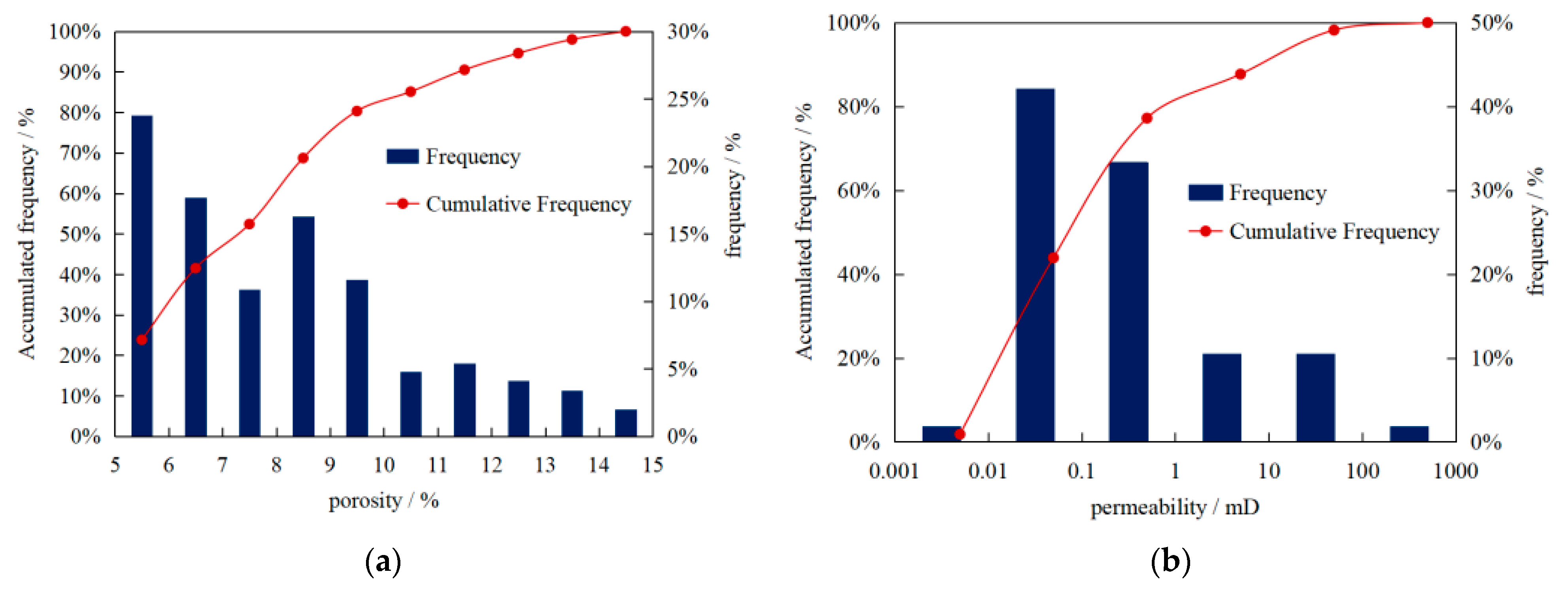
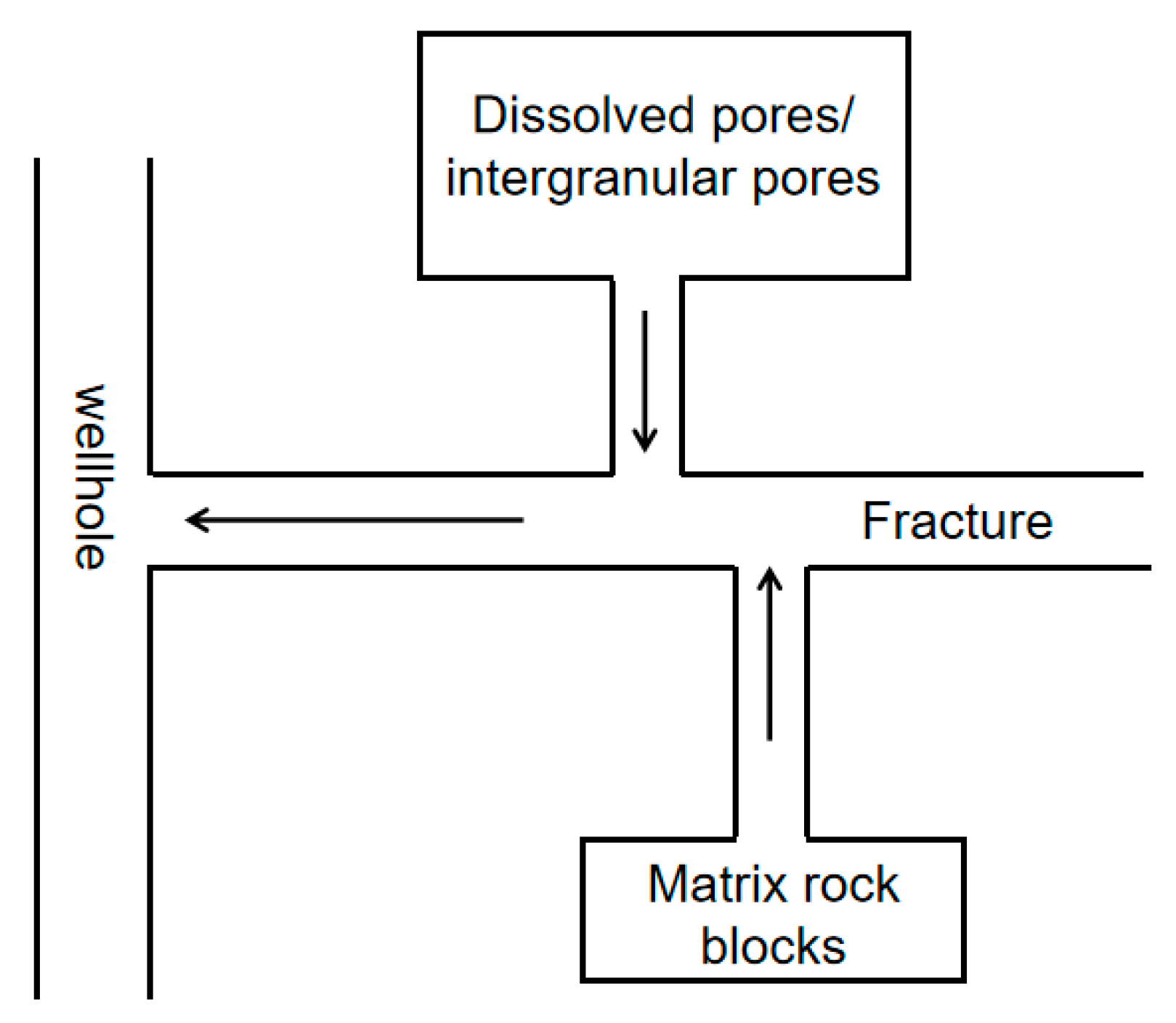
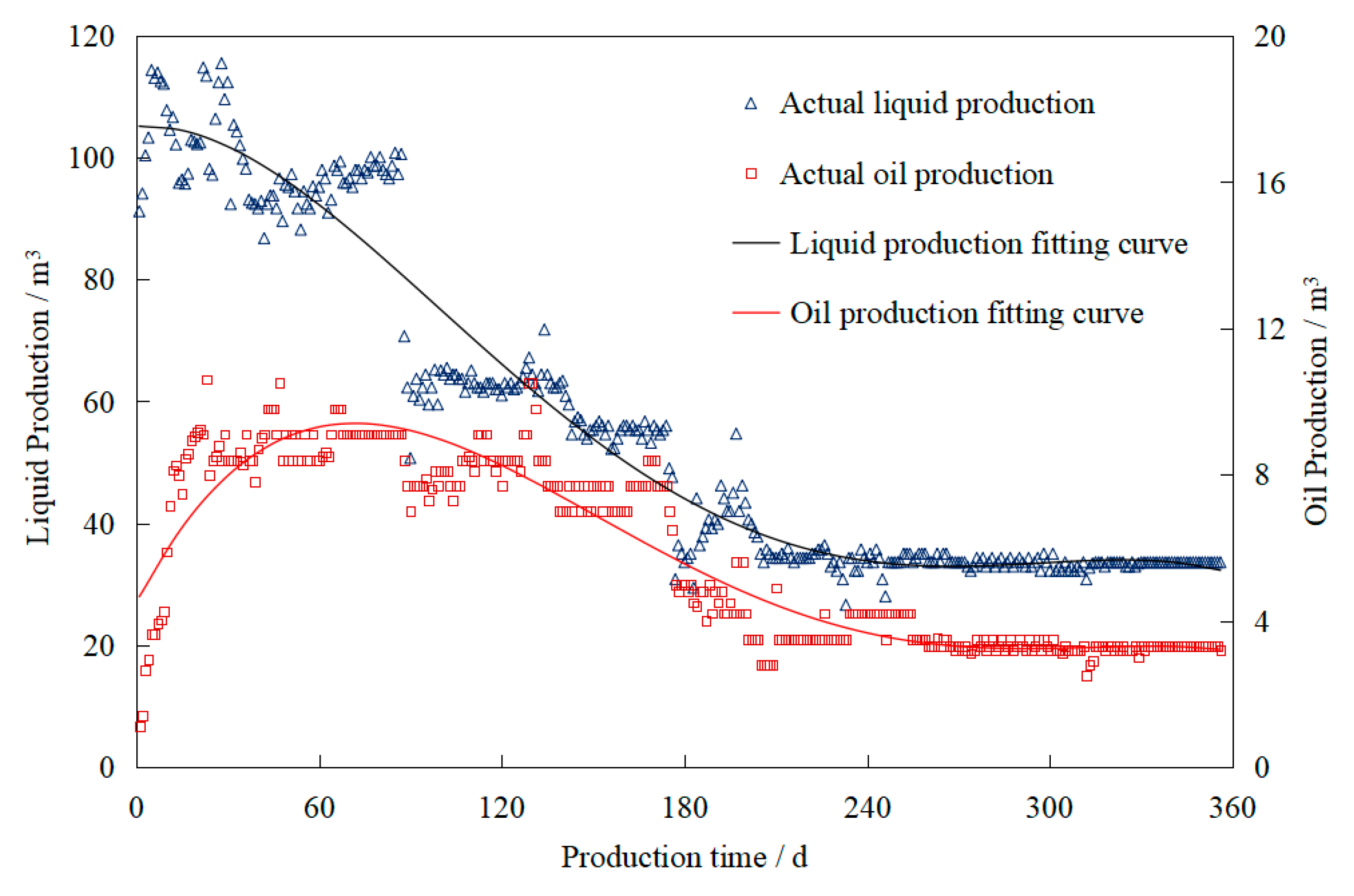
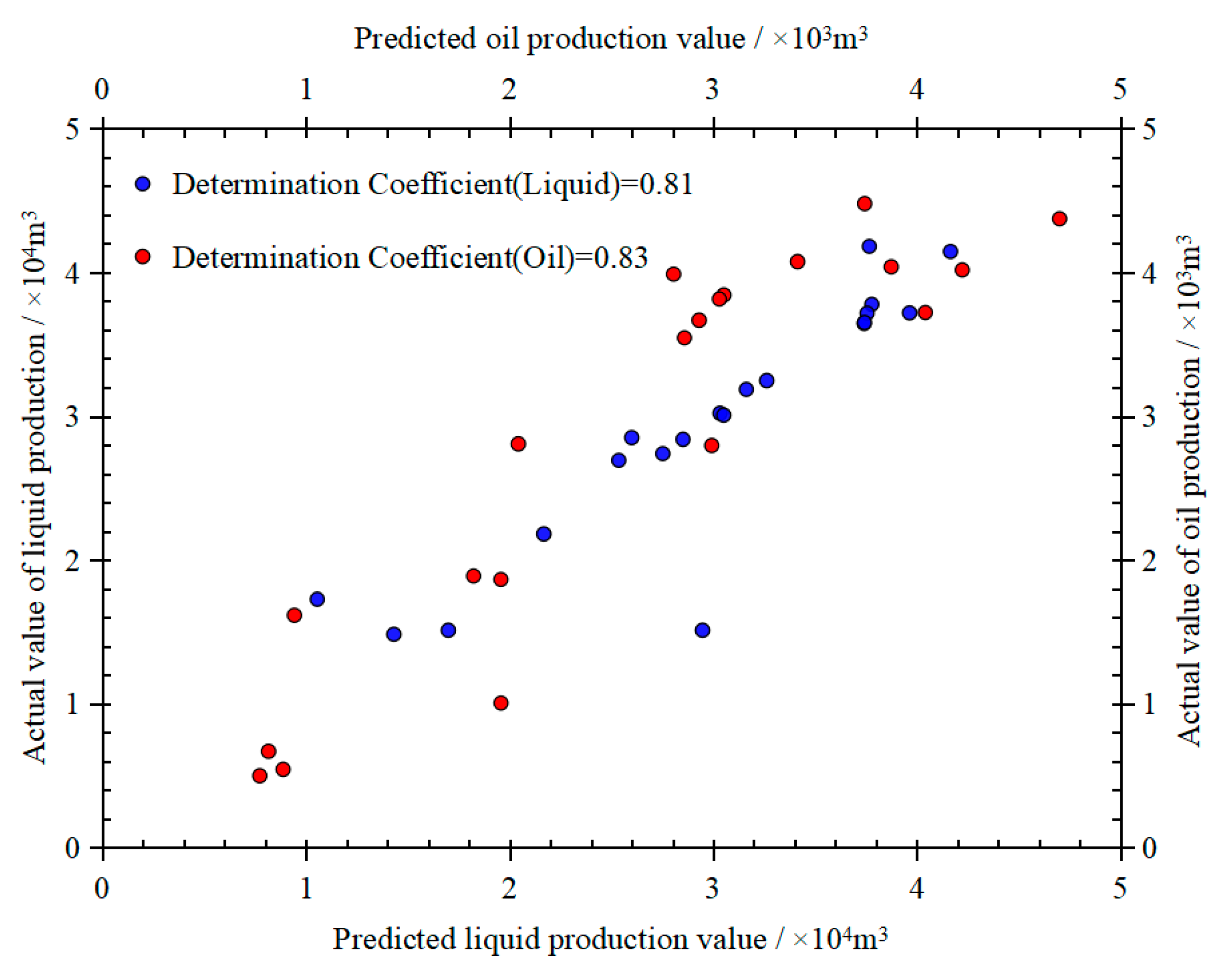

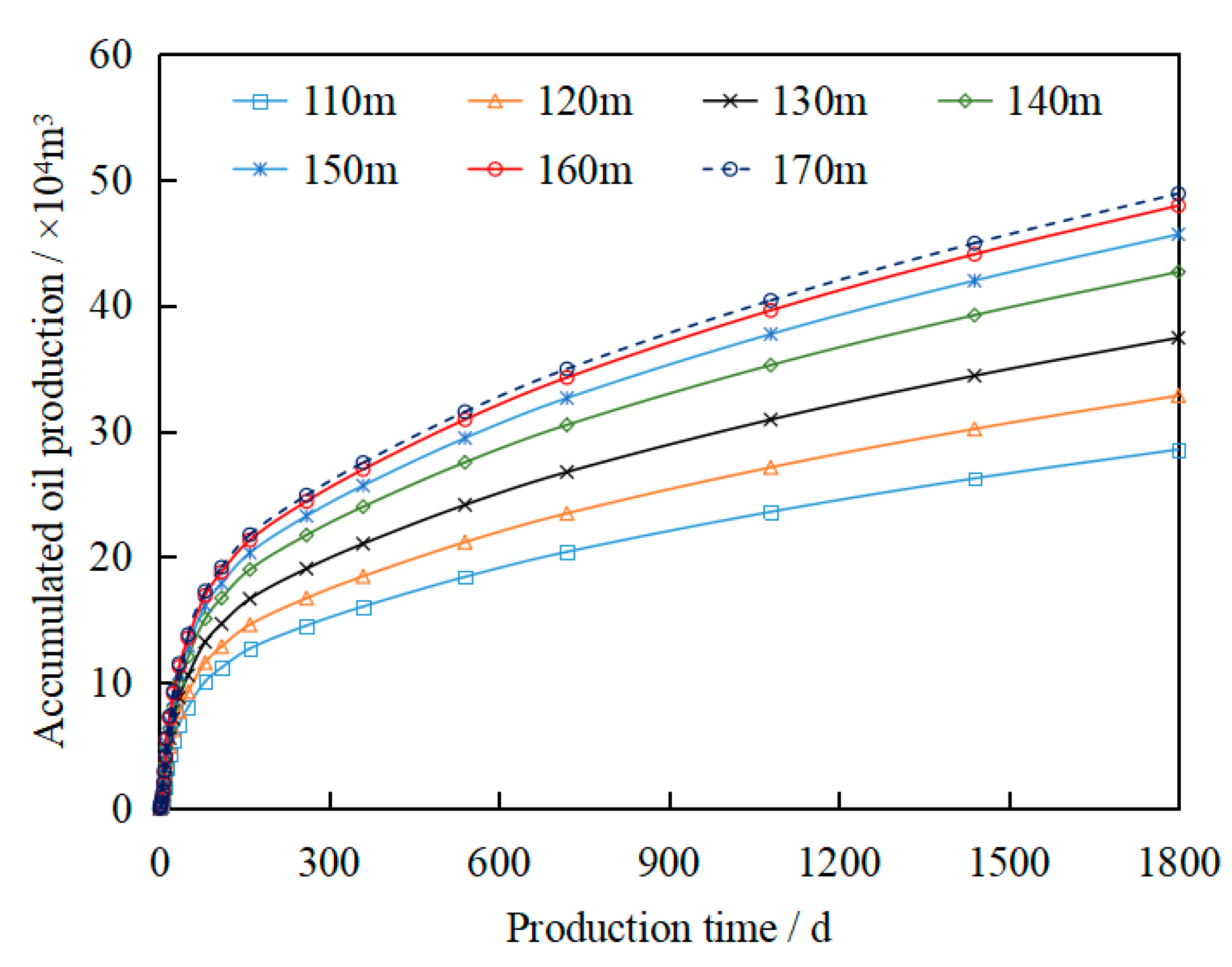
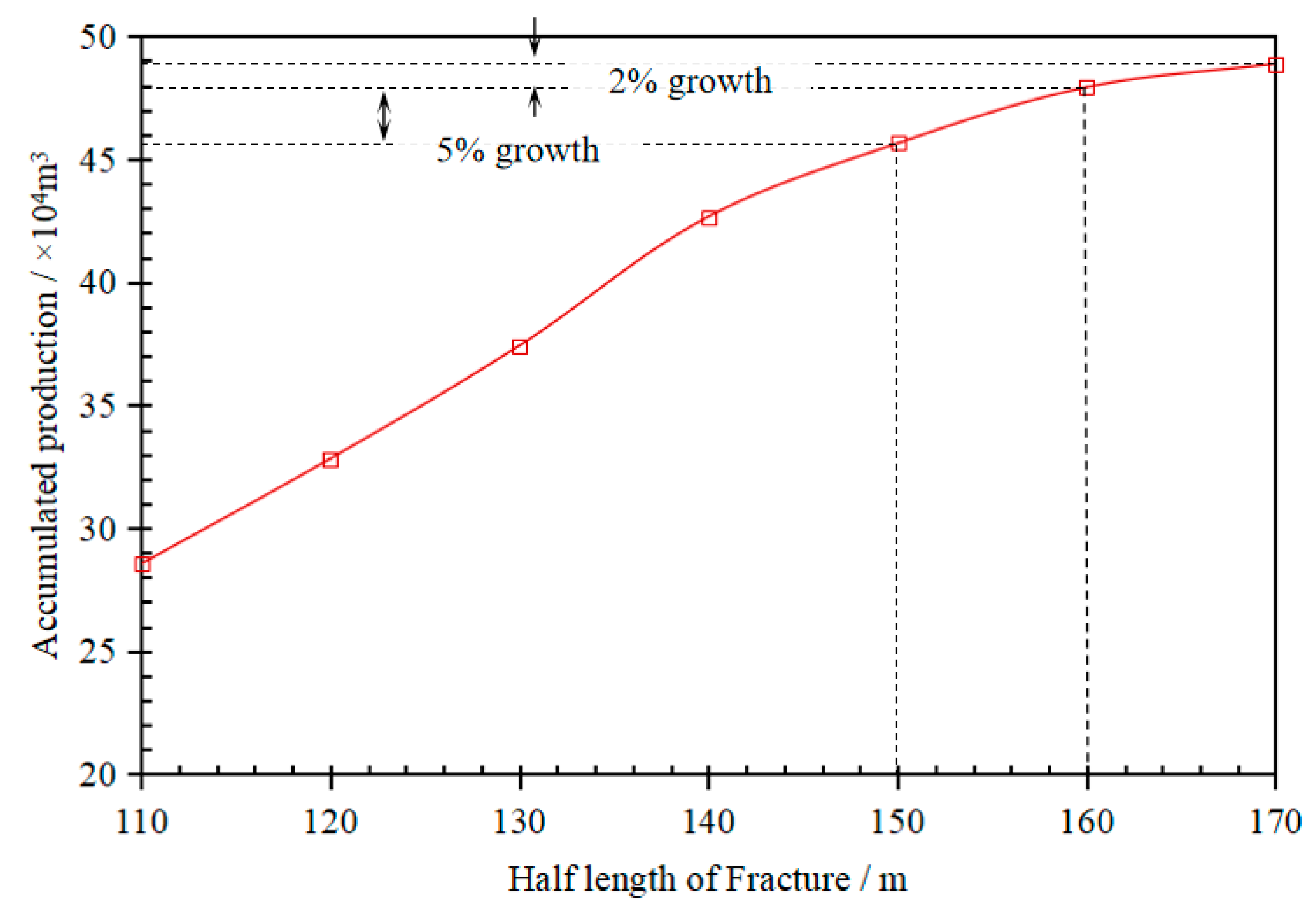

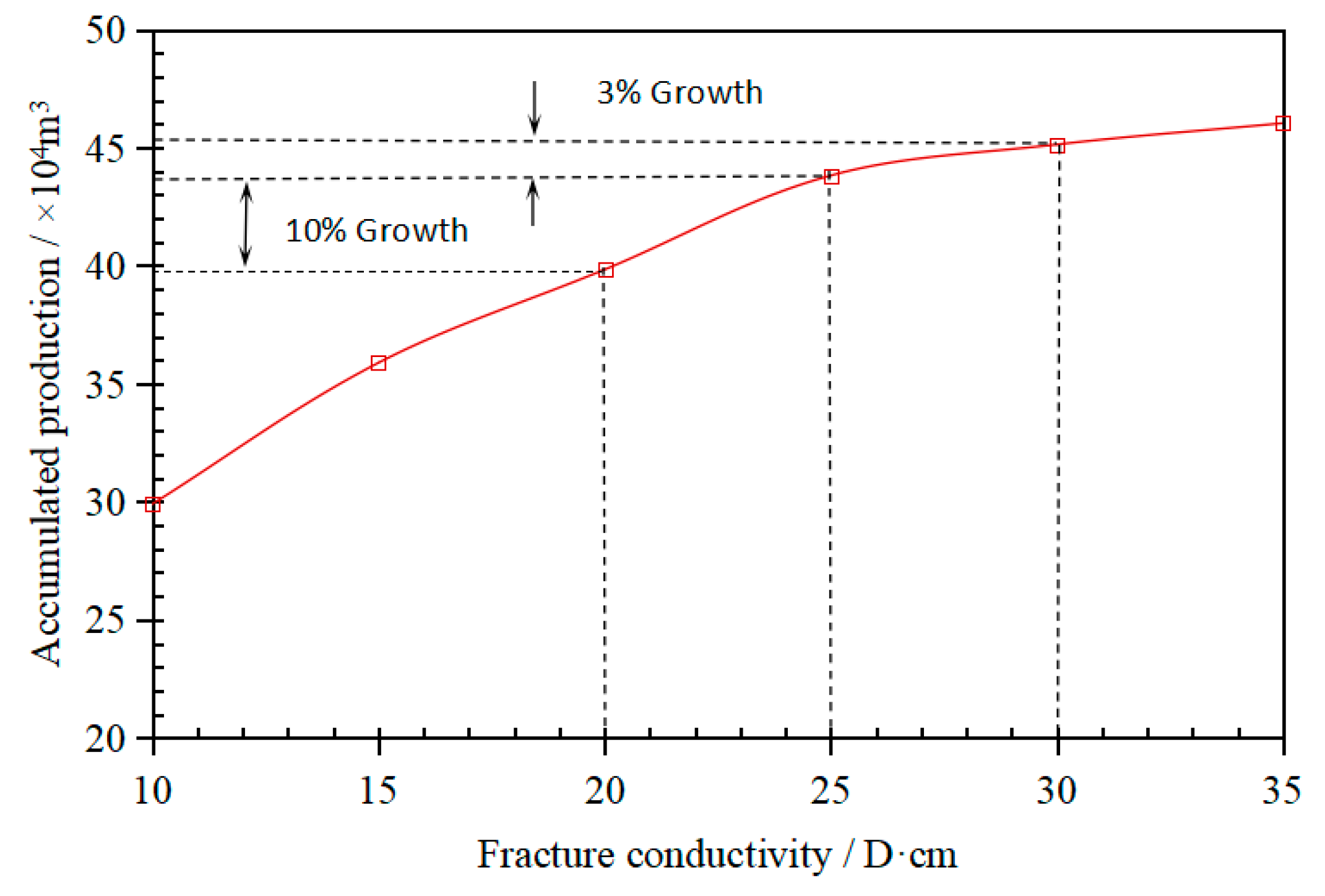

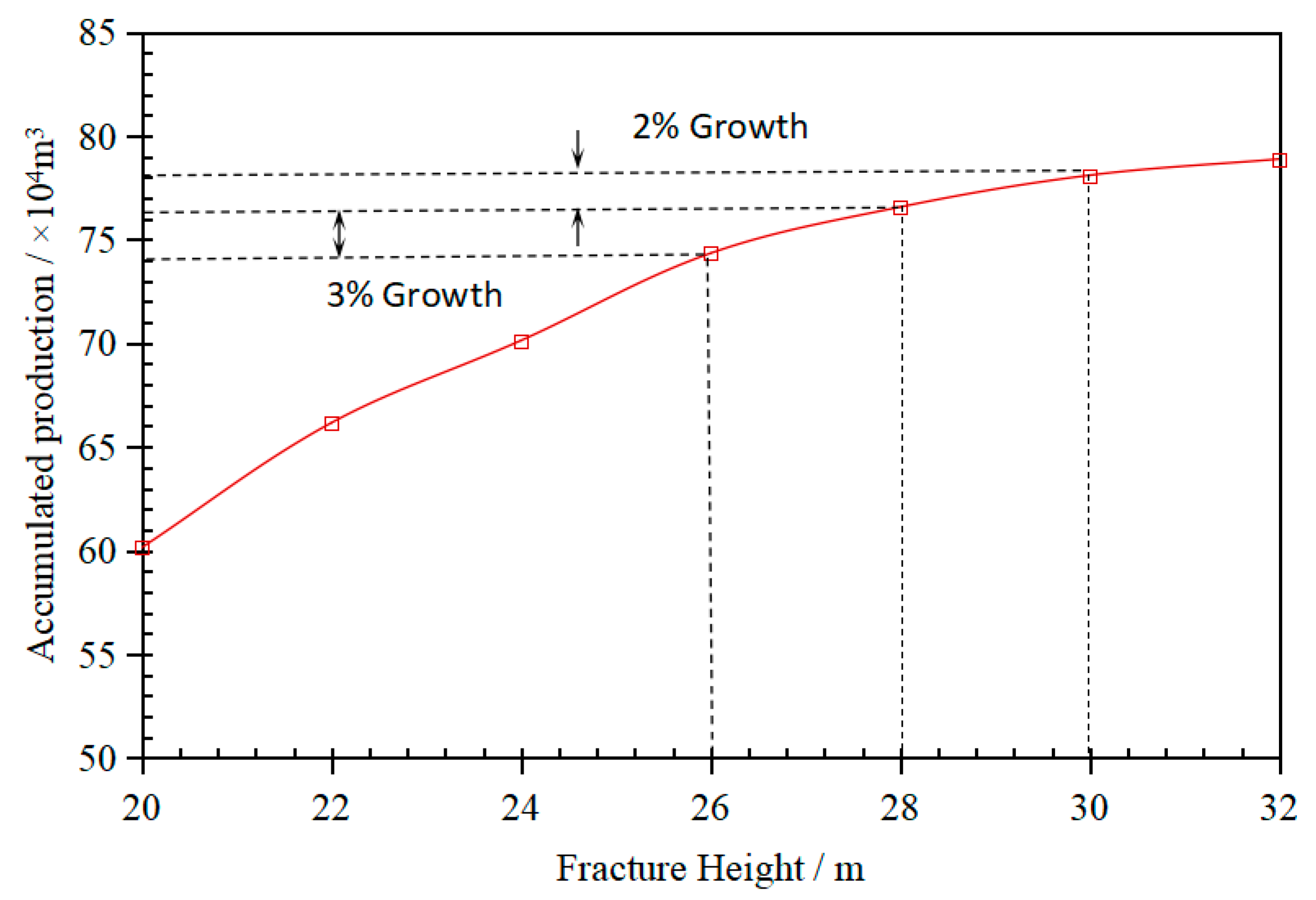
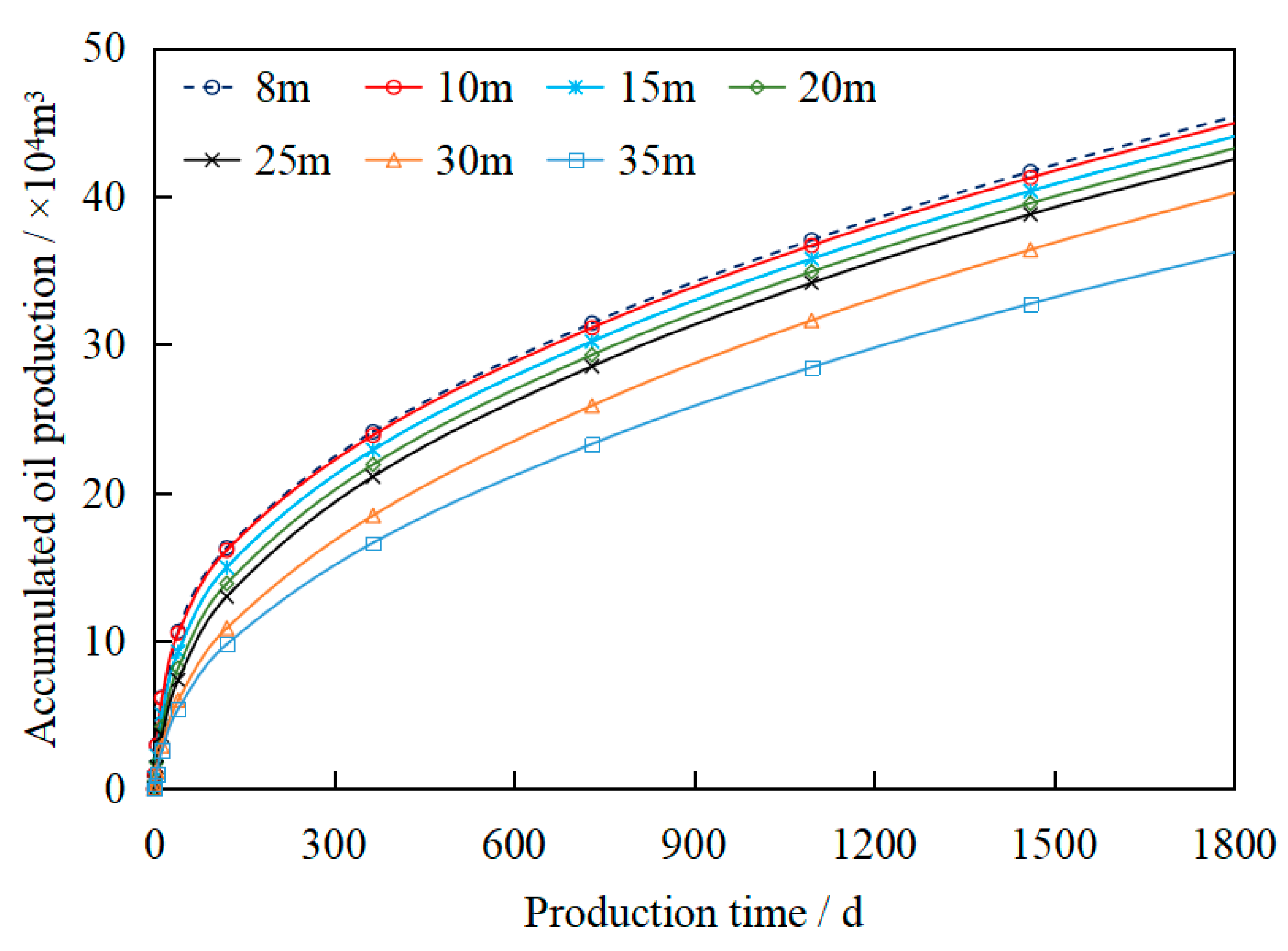
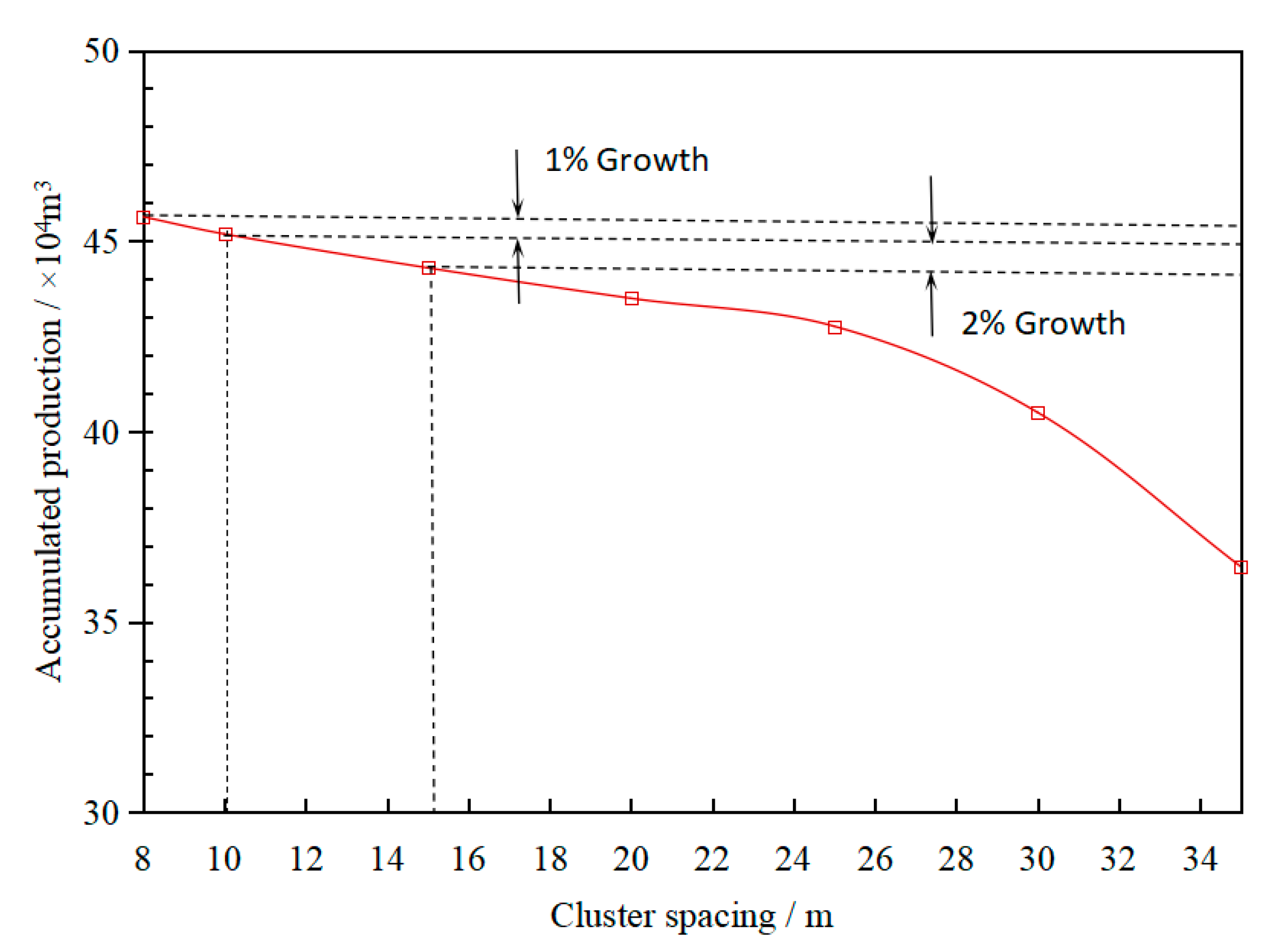


Disclaimer/Publisher’s Note: The statements, opinions and data contained in all publications are solely those of the individual author(s) and contributor(s) and not of MDPI and/or the editor(s). MDPI and/or the editor(s) disclaim responsibility for any injury to people or property resulting from any ideas, methods, instructions or products referred to in the content. |
© 2024 by the authors. Licensee MDPI, Basel, Switzerland. This article is an open access article distributed under the terms and conditions of the Creative Commons Attribution (CC BY) license (https://creativecommons.org/licenses/by/4.0/).
Share and Cite
Liu, S.; Xiong, T.; Liu, Y.; Zheng, H.; Ma, X.; Guo, D.; Wan, Y.; Xie, G.; Wang, Z. Optimization Design of Hydraulic Fracturing Fracture Parameters of Horizontal Wells in Algal Limestone Reservoir. Processes 2024, 12, 1302. https://doi.org/10.3390/pr12071302
Liu S, Xiong T, Liu Y, Zheng H, Ma X, Guo D, Wan Y, Xie G, Wang Z. Optimization Design of Hydraulic Fracturing Fracture Parameters of Horizontal Wells in Algal Limestone Reservoir. Processes. 2024; 12(7):1302. https://doi.org/10.3390/pr12071302
Chicago/Turabian StyleLiu, Shiduo, Tingsong Xiong, Yong Liu, Honglin Zheng, Xinfang Ma, Delong Guo, Youyu Wan, Guiqi Xie, and Zhisheng Wang. 2024. "Optimization Design of Hydraulic Fracturing Fracture Parameters of Horizontal Wells in Algal Limestone Reservoir" Processes 12, no. 7: 1302. https://doi.org/10.3390/pr12071302



